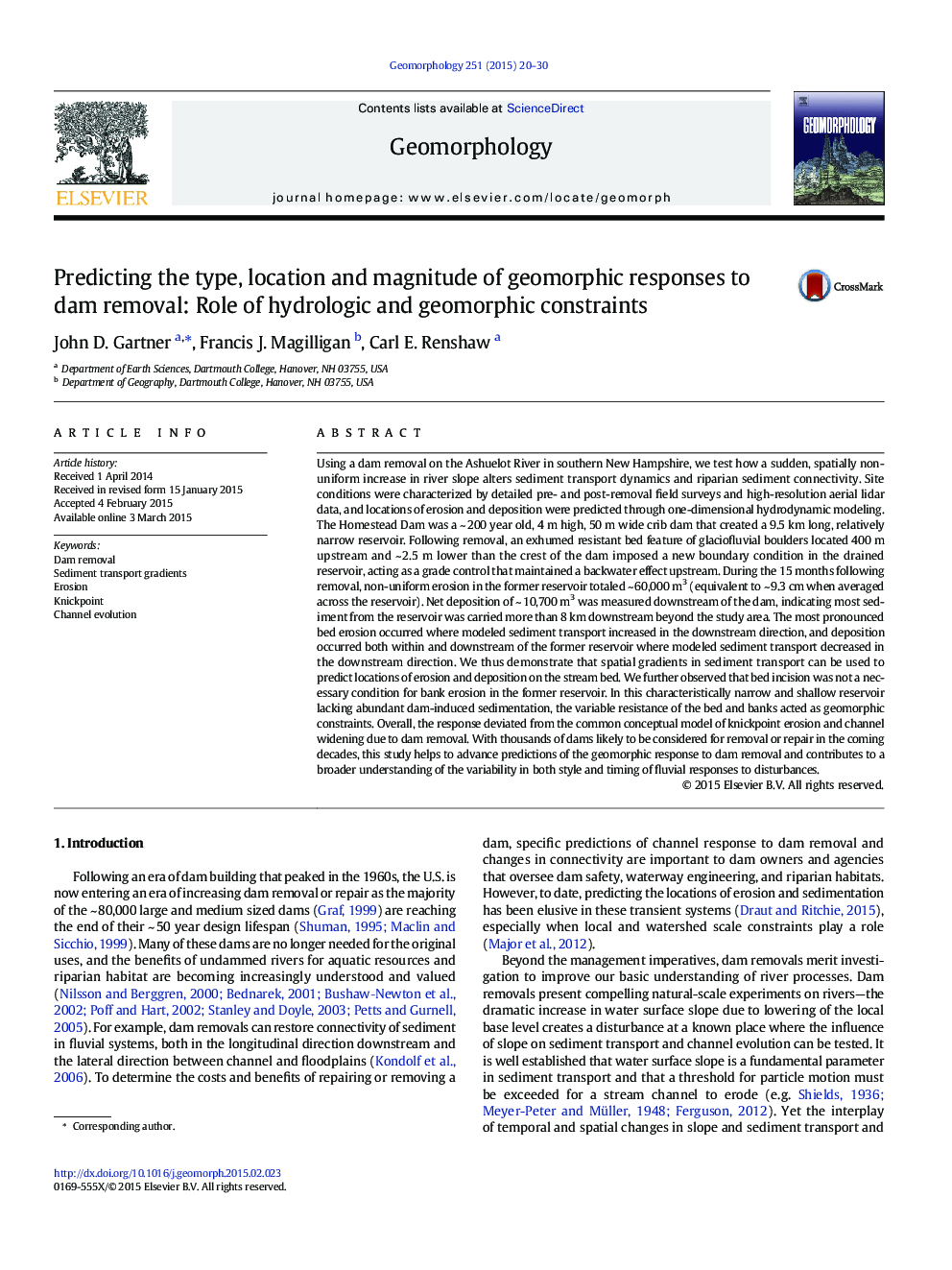| Article ID | Journal | Published Year | Pages | File Type |
|---|---|---|---|---|
| 4684140 | Geomorphology | 2015 | 11 Pages |
•We examine physical controls on channel response to dam removal.•Channel response reflects spatial gradients and thresholds in sediment transport (Qs).•Channel response deviates from common conceptual models of dam removal.•Qs gradients are often overlooked, but important in predicting erosion and deposition.
Using a dam removal on the Ashuelot River in southern New Hampshire, we test how a sudden, spatially non-uniform increase in river slope alters sediment transport dynamics and riparian sediment connectivity. Site conditions were characterized by detailed pre- and post-removal field surveys and high-resolution aerial lidar data, and locations of erosion and deposition were predicted through one-dimensional hydrodynamic modeling. The Homestead Dam was a ~ 200 year old, 4 m high, 50 m wide crib dam that created a 9.5 km long, relatively narrow reservoir. Following removal, an exhumed resistant bed feature of glaciofluvial boulders located 400 m upstream and ~ 2.5 m lower than the crest of the dam imposed a new boundary condition in the drained reservoir, acting as a grade control that maintained a backwater effect upstream. During the 15 months following removal, non-uniform erosion in the former reservoir totaled ~ 60,000 m3 (equivalent to ~ 9.3 cm when averaged across the reservoir). Net deposition of ~ 10,700 m3 was measured downstream of the dam, indicating most sediment from the reservoir was carried more than 8 km downstream beyond the study area. The most pronounced bed erosion occurred where modeled sediment transport increased in the downstream direction, and deposition occurred both within and downstream of the former reservoir where modeled sediment transport decreased in the downstream direction. We thus demonstrate that spatial gradients in sediment transport can be used to predict locations of erosion and deposition on the stream bed. We further observed that bed incision was not a necessary condition for bank erosion in the former reservoir. In this characteristically narrow and shallow reservoir lacking abundant dam-induced sedimentation, the variable resistance of the bed and banks acted as geomorphic constraints. Overall, the response deviated from the common conceptual model of knickpoint erosion and channel widening due to dam removal. With thousands of dams likely to be considered for removal or repair in the coming decades, this study helps to advance predictions of the geomorphic response to dam removal and contributes to a broader understanding of the variability in both style and timing of fluvial responses to disturbances.
